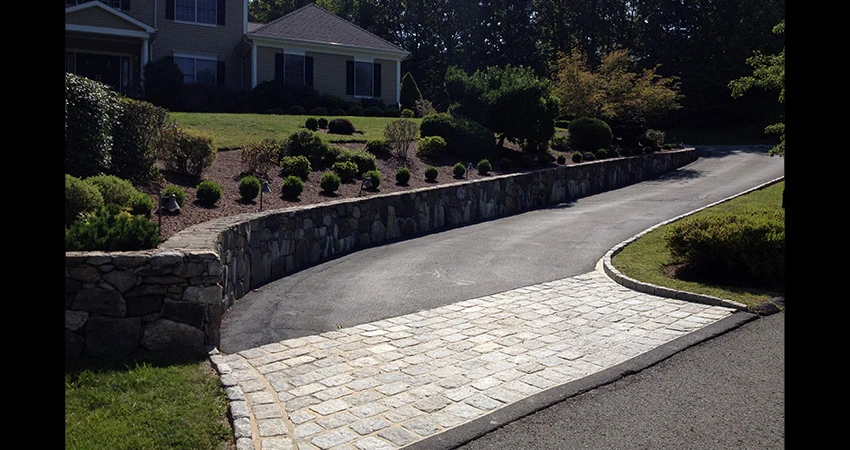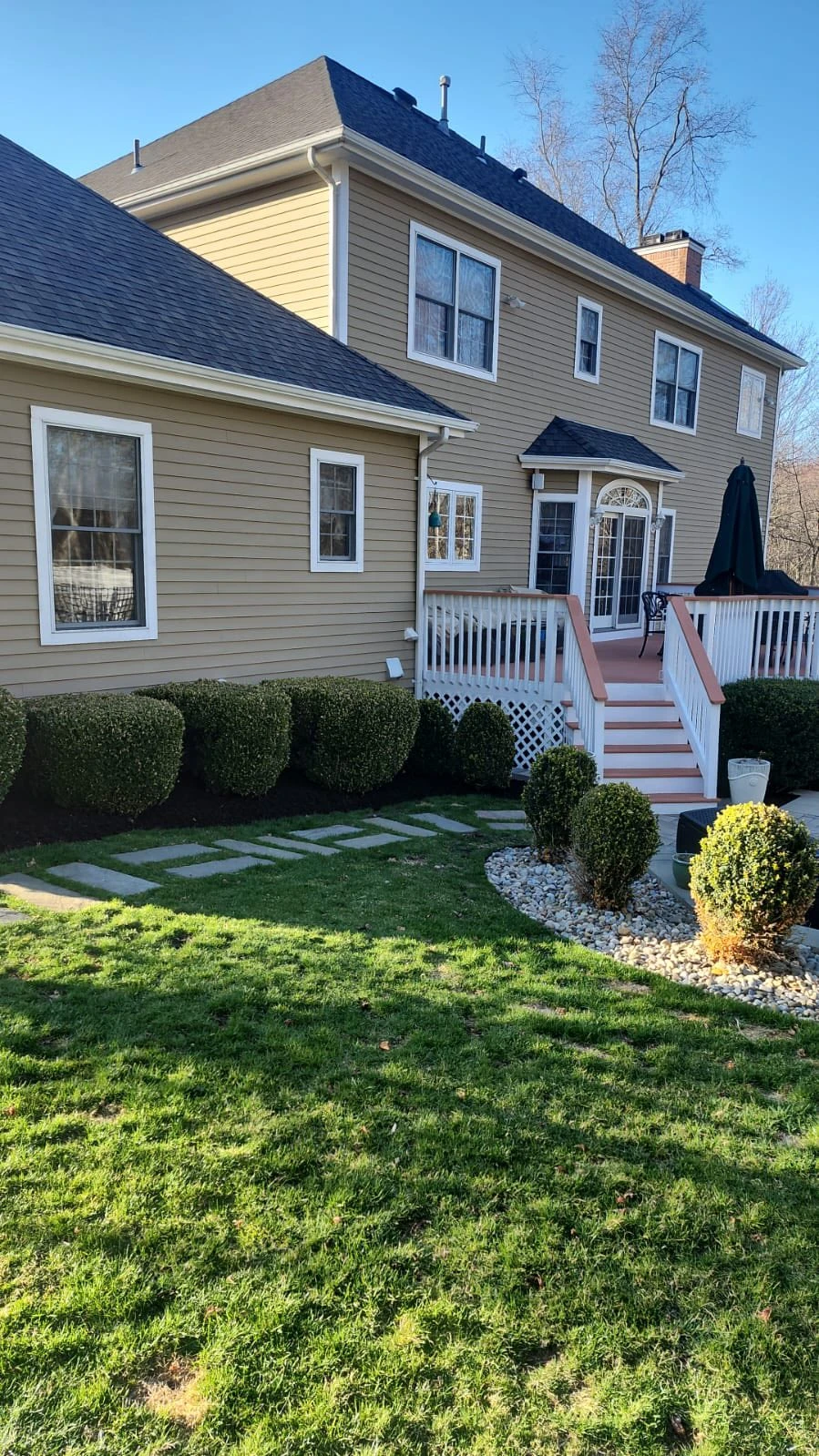Introduction: Why Balance Matters in Your Yard
In Connecticut, where every season brings a fresh experience, your yard should be more than a patch of grass—it should be a personal retreat. Achieving that means finding the perfect balance between hardscaping (patios, walkways, structures) and softscaping (plants, trees, and flower beds).
At https://yardgoats.io/, Yardgoats Landscaping and Construction helps Connecticut homeowners bring these elements together to create outdoor spaces that are both beautiful and usable—365 days a year.
When hardscape and softscape work in harmony, your landscape becomes more than just functional. It becomes a place you’ll love to spend time in.

What Is Hardscaping vs. Softscaping?
Hardscaping
Hardscaping refers to the non-living, built features of your yard. Think:
- Patios and fire pits
- Walkways and stone paths
- Retaining walls and seating areas
- Pergolas and fences
These provide structure, accessibility, and year-round durability.
Softscaping
Softscape covers all the natural, growing parts of your landscape:
- Lawns and garden beds
- Trees and shrubs
- Perennials, groundcovers, and vines
Softscaping brings color, texture, and life into the yard, changing beautifully with the seasons.
Why Connecticut Climate Should Influence Your Design
Connecticut’s USDA hardiness zones range from 5b to 7a, with:
- Cold, snowy winters
- Hot, humid summers
- Frequent freeze-thaw cycles
These shifts impact both plant selection and material durability.
Design Tips:
- Use frost-resistant materials like granite, bluestone, or high-quality pavers.
- Choose native or cold-hardy plants that can thrive through seasonal swings.
- Ensure good drainage in both softscape and hardscape installations.
Hardscaping Features That Boost Appeal and Function
1. Cozy Fire Pits
A fire pit is perfect for fall evenings and even winter gatherings. Use:
- Natural stone for a rustic look
- Brick for a classic New England vibe
- Gas or propane fire tables for convenience
Surround it with gravel or pavers for safety and ambiance.
2. Patios for Entertaining
Patios act as outdoor living rooms. Consider:
- Bluestone or flagstone for a timeless look
- Porcelain pavers for durability and slip resistance
- Raised edges or seat walls for structure and extra seating
3. Stone Paths and Walkways
Define movement through your yard using walkways that connect:
- The house to the garden
- Patio to driveway
- Fire pit to the lawn
Choose curved paths to soften the landscape, or straight lines for a modern feel.

Softscaping That Works Year-Round in Connecticut
1. Choose Native Plants
Native plants require less maintenance and support local pollinators.
Connecticut Favorites:
- Purple Coneflower
- Black-eyed Susan
- Butterfly Weed
- Little Bluestem
- Winterberry Holly
These plants are hardy and vibrant throughout the growing season.
2. Layer Your Flower Beds
Use vertical layers to create depth:
- Back: tall grasses, shrubs, or trees
- Middle: colorful perennials
- Front: groundcovers and edging plants
This gives a lush, organized look to any garden bed.
3. Plan for Seasonal Transitions
Your landscape should look good all year.
- Spring: Tulips, daffodils, dogwoods
- Summer: Coneflowers, hydrangeas, daylilies
- Fall: Asters, mums, ornamental grasses
- Winter: Evergreens, red twig dogwood, dried flower heads

Tips for Blending Hardscape and Softscape Seamlessly
1. Mirror Shapes and Lines
Match curves in your patio with soft curves in garden beds. Use similar materials to border both areas for a unified design.
2. Soften Edges
Let plants gently spill over walkways or patios. Use vines, grasses, or low-growing blooms to break up hard lines.
3. Use Vertical Interest
Arbors, trellises, and pergolas help blend the hard and soft. Let vines climb wooden structures or stone columns.
4. Think in Layers
Use tall trees or shrubs to “anchor” hardscape features like seating areas. Then build planting layers outward from there.
5. Keep Proportions Balanced
Avoid overloading your space with too much stone or greenery. Aim for a visual balance that complements your home’s scale.
Design for Connecticut’s Four Seasons
Spring:
Plant bulbs around patios and walkways. Clean and refresh hardscape elements.
Summer:
Host gatherings on the patio, surrounded by lush blooms and shade trees.
Fall:
Light the fire pit, enjoy ornamental grasses swaying in the breeze, and soak up fall color.
Winter:
Highlight evergreen structure, use lighting on walkways, and admire snow-dusted stone features.
Real Example: A Balanced Backyard in East Windsor
One Connecticut homeowner created a curved patio with built-in stone seating around a fire pit. Native grasses and hydrangeas were added for color and texture. By integrating hardscape and softscape from the beginning, they now enjoy a relaxing and visually stunning space all year long.
Why the Right Balance Adds Value
A thoughtfully balanced yard:
- Enhances curb appeal
- Extends outdoor living season
- Reduces long-term maintenance
- Increases home resale value
Plus, it simply feels better to be in a space that flows naturally—where every element has a purpose and place.
Conclusion: Make Your Outdoor Space Work Beautifully
The right combination of hardscape and softscape turns a plain yard into a personal retreat. By choosing the right materials, native plants, and thoughtful layouts, you can enjoy beauty and function in every season.
Whether you’re planning a full landscape makeover or just refreshing your fire pit area, focusing on balance will make your yard more inviting, sustainable, and valuable.
